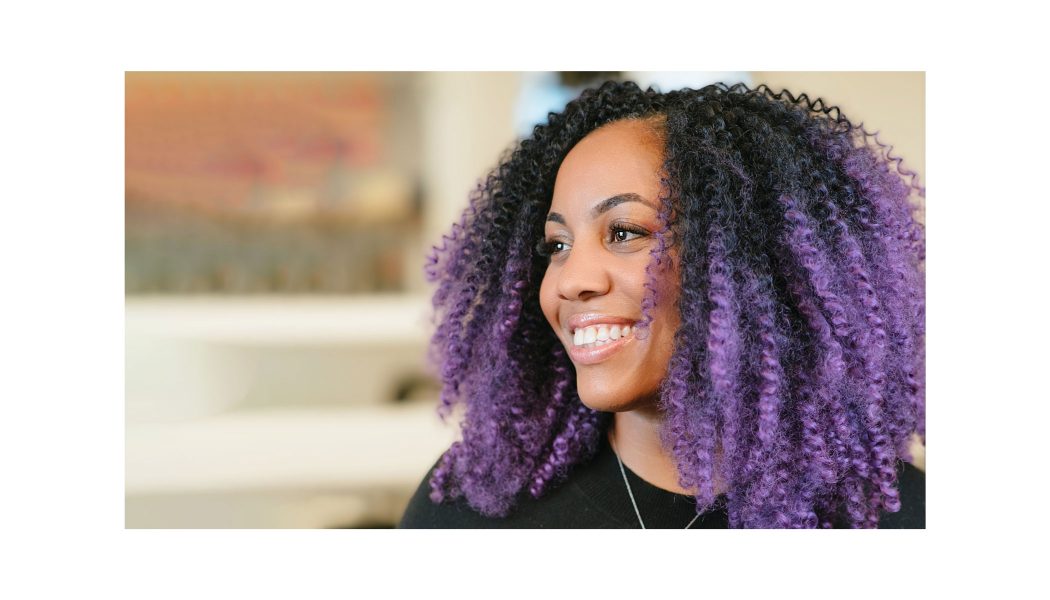Goes without saying that we all want to be proud of our workplaces. LaFawn Davis, Indeed’s Group Vice President of Environmental, Social & Governance, wants to help you feel that way. One area she’s championed on is diversity, inclusion and belonging. To explain the difference in those three things, she’s fond of quoting Verna Myers, activist and VP of Inclusion Strategy at Netflix, who has said that “diversity is being invited to the party; inclusion is being asked to dance.” But LaFawn adds that “belonging is knowing all the songs.”
And the singalong starts at her own company, making sure that everybody at Indeed knows all the words. “We, as I call it, drink our own champagne—I don’t believe in eating dog food,” she told Whalebone, referring to the common idiom of using your own product, especially popular in Silicon Valley circles. “So if we drink our own champagne at Indeed it is helping other companies also do this better because it’s aligned to our mission. If we help people get jobs, then helping our clients do this better is actually very much aligned to that mission.”

We didn’t get to drink any Champagne with her, but we did get to sit with LaFawn to talk about how we can all strive to create workplaces where everyone feels included and is proud to be there.
What are some of the things businesses, even those with the best intentions, are doing that might be unwittingly discouraging diversity and inclusion that they might not realize they’re doing?
LaFawn: Companies often begin with hiring a diverse workforce, which is really what diversity in the workforce means, but that’s table stakes. That’s the bare minimum of what a company should do. And oftentimes they will really just focus on diversity in the workplace. They will invest very heavily in that and not focus enough on the environment. So they don’t focus on inclusion, which is really around not just hiring people in, but around wanting to maintain and keep people and grow people in the organization. And that’s really the actions and behaviors that create a culture where employees feel valued, trusted, authentic, that their voice is heard, that they can contribute fully and thrive.
Taking things a step further it’s about implementing belonging. So we have done that at Indeed. And we define that as a feeling of community with the people and environments that make us feel connected. This is an outcome of diversity inclusion plus psychological safety. And I think what we know about psychological safety is that that is the leading indicator for high performance.
Once a company has established that they are committed to a diverse workforce, what are some basic things that they’ll do to kind of miss the boat after?
LaFawn: It’s making too much of a focus on getting people in the door. And not about the opportunities that they have to learn and grow. Things like tokenism which is the practice of making a symbolic hire of a person of color to give the illusion that it is an equitable workplace. Sometimes diverse job seekers come in and they feel lied to because it’s not what they were sold in the recruiting process, right. And maybe they meet with people of color or they meet with women and they get into the company and that was the only six people within the company. Companies need to make sure they have an environment in which diversity can thrive.
Is there a practice to cultivate that environment like a fundamental daily or weekly practice to cultivate that environment you’d recommend?
LaFawn: Some things that we have done at Indeed that I think work well across industries is that education piece. So it is educating your workforce and your people managers on what I call the -isms and phobias. So racism, ableism, homophobia, transphobia, all of those things. Educating everyone in the workforce especially those that have people management skillsets and are managing organizations and teams. It’s really about them understanding all of those layers so that they can build a culture of empathy within the organization.
And there are lots of things you can do in a small way in a big way. There are documentaries you can watch. There are podcasts you can listen to. Books you can read. Articles you can read. Just to understand other people’s lived experiences. Even if that is not your own. It is talking about things like privilege and ally-ship.
No one is a binary identity.

It is not shying away from those conversations that, whether we realize it or recognize it or not, people bring with them to work every single day. It is talking about diversity with an intersectional lens. So no one is a binary identity. I am black, I’m queer, I’m a woman, I’m a mother, I’m of a mature age. I am a lot of different things. There’s no one piece of what diversity means for me. And so talking about that and understanding how those layers mean people show up to work differently and they experience the workplace differently is increasing empathy throughout the organization. And that is what leads to creating an environment that is inclusive where people feel like they belong. I think the company can just start there. Start with educating, start with looking at all of those resources and make that a continual practice of learning. So that way there’s a deep understanding and a deep empathy when diverse job seekers join your organization.
So, a company comes to you for help. They say, “We want to be better. We have this diverse workforce but we want to create a more inclusive environment and be aware of workplace empathy.” And they’re really striving. What is the first thing that you would ask them?
LaFawn: The first thing I would ask them is, “What are you really doing this for?” Because there are some companies who are being performative, meaning they’re only doing things that they think they need to kind of save face. Or to allude to having an inclusive environment. So they may potentially put up statements of solidarity but not take any action in house. And then I would ask them, “What kind of investment are you looking to make into this work?” Because again, from what I said kind of earlier on, it’s not about intention, it is about impact.
Sometimes the conversation starts with them saying, “Well, I have good intentions and I just want everybody to feel great. And I want people to feel like they belong.” Then I push a little bit past that and say “Okay, but what are you doing to make that a reality? Are you taking a look at your system within the company on how you hire, on your performance, on who’s getting promoted, on who’s getting opportunities?
Are you looking at your attrition rates and seeing if people of color or women or other underrepresented populations are leaving at a faster rate? And if so are you doing a deep dive to understand why? Are you doing sentiment analysis to really understand how your employees are feeling?
So, I would start with that one question to really see where their motivation was coming from. And then I would hit them with some other questions around the actions that they have been taking or not taking and starting there.
For a job seeker, beyond kind of the obvious, what should you look for in a company to know that you’re going to a place of inclusivity?
LaFawn: Oftentimes under-represented folks don’t have the same network that might exist at a company they want to work for. So there are a few things you can do. It is checking out a company website to get an understanding of their core values. A lot of companies state their values on their website. You want to take a look at their corporate social media and see what they’re posting. Are there things around like company statements, support for marginalized groups? Are they mentioning any of the social issues that are happening around them or is it business as usual?
You can look at employee reviews on Indeed company pages. So that would be indeed.com/companies. Any of those company pages have reviews. And there’s now an inclusive score on Indeed company pages where current and former employees can rate the company’s level of inclusivity. So that’s on the surface. The things to look out for are tokenism as I mentioned. Being an active job seeker really researching and paying attention to the people that are interviewing you. Making sure you’re not the first, I’m using my quotation fingers that you can’t see, diversity hire. That’s a red flag.
And if you’re interviewing for one role but they mentioned to you that they want you to also lead diversity initiatives but that’s not the job you’re interviewing for. That’s something to look out for.
What sort of questions should a job seeker ask to determine all that?
LaFawn: It’s asking tough questions. Things like, what are the most important values of your company? How do you promote diversity, inclusion and belonging? What are you actually doing? What actions are you taking? Saying things like “An inclusive environment is valuable to me. So how do you promote inclusivity among your team? Do you have employee resource groups or employee advocate groups?”
Often what you’ll see at a company is a lot of grassroots efforts. So a lot of employees get it but as you start to go through the ranks of a company sometimes that voice is lost. So does this start at the top and at the bottom? And how do you show that commitment in both ways?
And after that, what can an employee do to foster an environment of inclusion and belonging within their workgroup, with their coworkers, despite what’s happening at the top or even to augment that? What can we do in our regular work life?
LaFawn: Employee resource groups are a fantastic way for employees to have a collective voice. We have, I want to say, 10 inclusion resource groups and the most recent companies that I’ve worked for have had those as well, where they are fantastic advocates and partners for the business.
In most successful models that I’ve seen for employee resource groups, these are absolutely grassroots. So this is an employee population saying, “Hey, I think we need to build a community. I think we can be a resource for the business. I think we can help the company attract, recruit, retain and develop talent.” And build the community from there. I don’t think it’s the greatest idea for HR to create groups and then have people join them.
I think that at Indeed these IRGs are probably the most empowered I’ve ever seen. You have executives who are like, “Okay, let’s meet with this group. Let’s meet with this other group. We don’t want to release anything out there unless this particular population has given feedback.” They do user testing. They will take a look at our marketing materials. Our brand materials, what products we’re going to release, any features we have and give a perspective that might not be on those core teams. And it’s been fantastic. And I think that’s where you want to be as an employee that’s your way of shifting change.

Over the last year, just in terms of remote work, there have been these feelings of isolation that everyone’s experienced. And it certainly creates a barrier to a sense of inclusion and belonging. What are some successful strategies that you’ve seen to keep the ball moving, to keep the feelings of inclusion and belonging going even with remote work?
LaFawn: I think the pandemic has forced us all to take pause and support one another in a way that hasn’t happened before. It’s become more imperative than ever that we check in on our colleagues, our neighbors, our friends, our families’ wellbeing. And this has brought an influx of empathy throughout I think all communities that we think will remain long after the pandemic is over. Because now we know, right. And a big part of belonging, it’s feeling that sense of community and togetherness at work. The empathy that has resulted from the effects of the pandemic will translate into a couple of areas I think. More empathy in the workforce among peers from managers. More empathetic employee communication, which I think we saw a lot of positive outcomes from. We talked to employees much more. Leadership was talking to employees much more.
We have weekly Q&As with the CEO. All of those things have a more empathetic tone to them. And I think there’s also going to be more flexibility for employees to avoid burnout. A lot of the time off programs that companies are doing. The ones that we’ve done have been pretty successful. Looking at the time that you spend at work and if you need time off we have an open PTO policy, things like that. Additionally, leaders and managers, they really set the tone. They set the example for the entire workforce. And I think at Indeed we focus on the coaching, training, having crucial conversations with managers to ensure we’re cultivating that sense of inclusiveness and belonging well past when we come out of this pandemic.
Finally, not that there’s a finish line that we would get to on creating diverse and inclusive workplaces. But what is the important ground right now yet to cover for companies to continue making progress?
LaFawn: It is going to be to continue to deepen some of the things I talked about around creating the sense of belonging and inclusion. That evolution is still yet to come. We have to keep our foot on the gas on that. Oftentimes, we may be like, “Okay, 2020 is over.” And so let’s go back to business as usual. So what is this new world going to look like? And how can we make what we did all 2020 and in 2021, as far as building more empathy, taking care of our people, making sure that companies understand that employees are their greatest asset. How can we make sure that that stays when everything else goes away?










